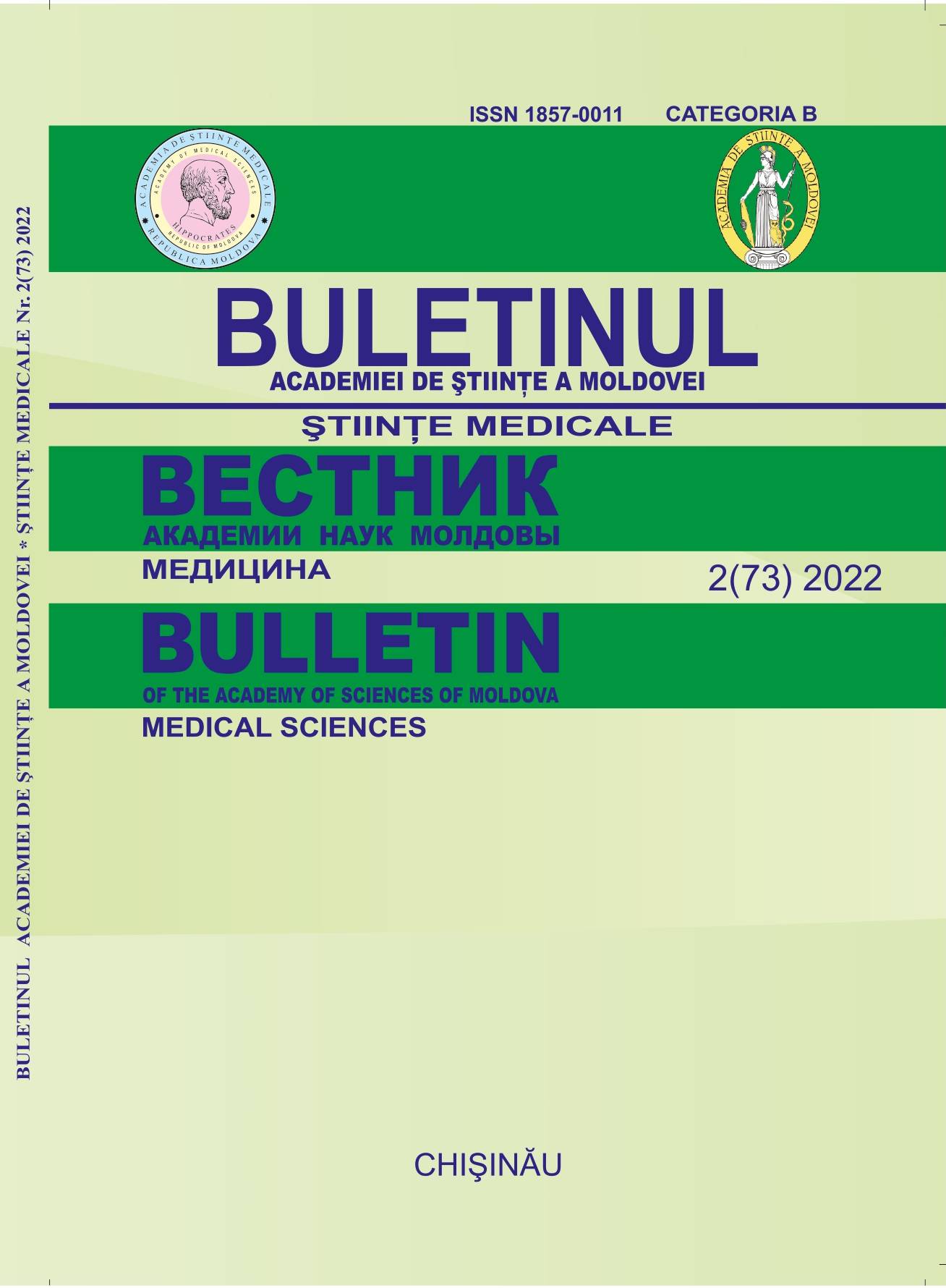Морфологические нарушения зрелых с врожденными разломами в зубо-челюстно-лицевой области. Биометрический анализ и статистический анализ исследовательских моделей
DOI:
https://doi.org/10.52692/1857-0011.2022.2-73.14Ключевые слова:
морфологические нарушения, зубочелюстно-лицевая область, врожденные расщепления, распространенностьАннотация
Эпидемиологические исследования показывают, что распространенность расщелины губы и неба (DLMP) варьирует под действием таких факторов, как социально-экономический статус, географическое положение, расовая принадлежность. В Европе средняя распространенность ДЛП составляет 0,62:1000. В 70% случаев ДЛП является несиндромальным, а остальные 30% - синдромальными. Исследователи в Республике Молдова провели Лупан И. (1991), Гранчук Г. (1986-2022), С. Райлян (2010-2022) [1-11] (в Румынии распространенность при рождении составляет примерно 1:800). Изучено 44 верхнечелюстные модели исследования, полученные от 22 пациентов с различными формами врожденной расщелины губы, альвеолярного отростка и неба, перенесших Клинические отклонения взрослых при врожденных расщелинах челюстно-лицевой области и выраженность этих нарушений зависят от вида врожденной патологии, обширности поражения, а также качества хирургического вмешательства зубной дуги и ее деформации, обусловленной послеоперационными последствиями односторонняя и двусторонняя проникающая расщелина верхней губы, альвеолярного отростка и неба.
Библиографические ссылки
Graber L, Vanarsdall R, Vig K. Orthodontics Current principles and Techniques, 5th edition, Elsevier. 2011;965-89.
Nicholls W. Dental anomalies in children with cleft lip and palate in Western Australia. European Journal of Dentistry. 2016
Burston WR. The early orthodontic treatment of cleft palate conditions. Dental Practice.1958
Blazer S, Naveh Y, Friedman A (1980) Foreign body in the airway. A review of 200 cases. Am J Dis Child 134(1): 68-71
Iverson DB, Caputo AA, Turley PK (2000) Response of headgear release mechanisms to non axial force application. Angle Orthod 70(5): 377-382
Loeffelbein DJ, Rau A, Wolff KD. Impression technique for monitoring and virtual treatment planning in nasoalveolar molding. The British Journal of Oral and Maxillofacial Surgery.
So LL. Effects of reverse headgear treatment on sagittal correction in girls born with unilateral complete cleft lip and cleft palate-skeletal and dental changes. American Journal of Orthodontics and Dentofacial Orthopedics.
Polley JW, Figueroa AA. Management of severe maxillary deficiency in childhood and adolescence through distraction osteogenesis with an external, adjustable, rigid distraction device. The Journal of Craniofacial Surgery.
Marcusson A. Adult patients with treated complete cleft lip and palate. Methodological and clinical studies. Swed Dent J Suppl 2001;145:1– 57.
Carla A. Evans, Orthodontic treatment for patients with clefts Clin Plastic Surg 31 (2004;271–90).
Christos C. Vlachos. Orthodontic Treatment for the Cleft Palate Patient Seminars in Orthodontics, Vol 2, No 3 (September),1996:197-204.
Загрузки
Опубликован
Выпуск
Раздел
Лицензия
Copyright (c) 2022 Вестник Академии Наук Молдовы. Медицина

Это произведение доступно по лицензии Creative Commons «Attribution» («Атрибуция») 4.0 Всемирная.



